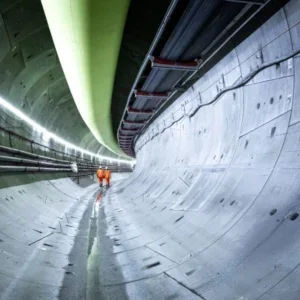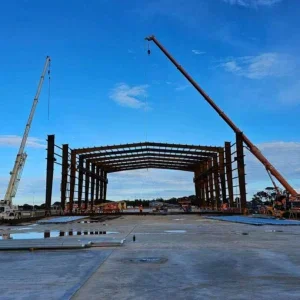In April, the AA Motoring Trust released details of the 2006 European Tunnel Assessment Programme (Eurotap) inspections. The UK’s Medway Tunnel was tested for the first time and despite being opened fairly recently in 1996, received a “very poor” rating, putting it in the bottom nine of the 52 tunnels inspected across Europe this year.
The tunnel in Rochester, Kent, was the first immersed tube tunnel in England and features a 370m long immersed tube section, with cut and cover approaches. The report said it was a busy tunnel with around 46,000 vehicles using it daily, of which nearly 9% were heavy goods vehicles (HGVs). The main shortcoming identified were: gaps in the video surveillance; no regular training for tunnel personnel; no permanently manned tunnel control centre where video images could be sent and monitored; no automatic detection of traffic incidents or automatic fire alarm system; no emergency response plan and no regular emergency drills.
The inspectors did note that the tunnel operator was planning a new video surveillance system and an emergency response plan. It was also noted that improved co-ordination between the tunnel operator and emergency services was planned, as was a video link to the control centre at Rochester.
On a more positive slant, the tunnel was commended on adequate escape and rescue provision; emergency phones and fire extinguishers; a sufficiently powerful ventilation system; adequate radio communication of emergency services throughout the tunnel; and regular cross tunnel escape routes.
The AA Motoring Trust said that it was unusual for a tunnel as new as Medway to be rated so poorly, adding British tunnels had a good safety record and good management has helped even older tunnels achieve reasonable scores. It said: “Medway bucks this trend as it is the physical traffic control and management which needs to be improved.”
T&TI contacted Medway Council who assumed responsibility for the tunnel from Kent County Council in 1998. Since November last year, Phil Moore has been appointed as Head of Highways for the council and designated Tunnel Manager. Moore had been keen for the tunnel to be included in the 2006 evaluation, as he had prioritised the tunnel as a major asset requiring attention.
Moore said steps had already been taken to address the shortcomings: CCTV, environmental monitoring and management and operational control systems to be replaced and linked back to Medway control centre in Rochester where a 24/7 operation can be delivered; bringing forward of the structural principle inspection due in 2007 to this year with a consultant to be appointed in the coming months; recently undertaken principle inspection of mechanical and electrical services; updating operational manual from 2002 to 2006 standards which will form the basis of a risk management procedure.







